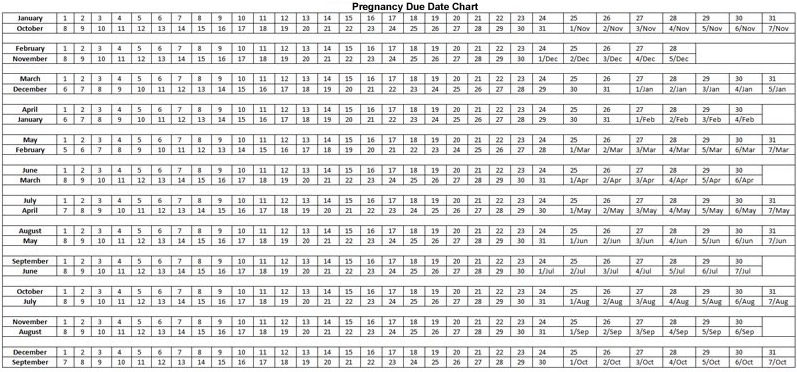How to Find Out Due-Date by Your Last Period?
There are two common ways to determine your pregnancy due date; (1) by the first day of your last period and (2) by the day of your ovulation /conception. The second way is probably more accurate. But since there are many women who don’t know the exact day of their conception, the calculation based on the last menstrual cycle is more common choice.
What is pregnancy due date? It is an estimation of the day when a baby from pregnancy will be born. Generally, most pregnancies (on average) take about 40 weeks or 280 days from the first day of a woman’s last menstrual period to the day of delivery. And this interval is divided into 3 major trimesters, which each trimester typically consists of 3 months (particularly for the first and second trimester).
Many experts believe that predicting EED (estimated date of delivery) based on the conception is one of the most accurate options. But unfortunately, there are a lot of women who don’t know exactly the day of their conception.
The day of conception can be estimated from the day of your ovulation. If you know exactly the day of your ovulation, you can just simply add 266 days (38 weeks) to the date of your ovulation. The result is the prediction of your pregnancy due date.
Due to most women don’t know the day of their conception, the calculation of pregnancy due date is more commonly based on the first day of the last menstrual cycle. For this case, 14 days are added – this means you get a total 280 days or 40 weeks. So your due date is about 280 days after the first day of your last menstruation.
The number of ’14 days /2 weeks’ is based on the estimation that your conception /ovulation occurs on the 14th day of the average regular menstrual cycle (28 days).
The following is a helpful chart (credit to femail.com.au – click the image to enlarge it) to estimate the date of delivery (this chart is made with ‘280-days /40 weeks rule’).

Like in predicting the day of ovulation, the calculation of due date for pregnant women with regular period is also slightly easier than women with irregular menstrual cycle. The use of 280-days rule is effective and accurate enough for women with regular periods, but how accurate it is for women with irregular periods? Keep reading!
If you have irregular periods, your due date may be slightly different /even very different from the calculation on the chart – depending on the irregular cycle of menstruation that you have. For instance, if you have a longer /shorter cycle of menstruation, the date of your delivery will probably be later /earlier than the result with ’40-weeks-rule’.
If you in doubt to the calculation with ‘280-days rule’, ultrasound test is usually recommended for more accurate result! Consult more with your doctor /healthcare provider for more advice!
The calculation based on the last menstrual cycle with ‘280 day rule’ may be the easiest /simplest way to predict a date of delivery. But if you are not sure or don’t remember to the first day of your last period, your doctor may ask you to do an ultrasound test.
Furthermore, in line with the age of your pregnancy, your doctor usually will also find some symptoms that point to the estimated date of your delivery.
There is no any formula that can tell you exactly about the exact date of your delivery. Though the mentioned formula (280-days rule) is pretty accurate for women with regular periods, but there is still a margin of error. In fact, only about 5 percent of pregnancies deliver on their due date!
Your true labor will probably come slower or more quickly (about – / + 2 weeks) than your EED. But at least, you and your partner know the estimated weeks when you should prepare yourself for your delivery!
It is pretty common to have delivery before /after about 2 weeks of EED. But if you pass more than 2 weeks of your due date, and there is still no any sign for delivery, your doctor may think that you now have postterm pregnancy or more familiar known as overdue pregnancy!
Postterm pregnancy is more likely to occur in women with the following conditions:



